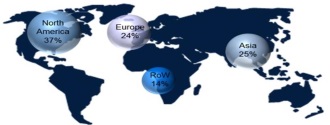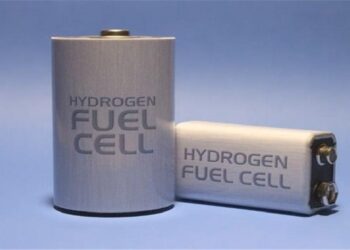This report covers the ten types of materials available to improve heat removal in eleven key applications with a combined market of $1.3bn, predicted to rise to $3bn by 2025.
Overheating is the most critical issue in the computer industry. It limits further miniaturisation, power, performance and reliability. The escalation of power densities in electronic devices has made efficient heat removal a crucial issue for progress in information, communication, energy harvesting, energy storage and lighting technologies. As long as electronic systems aren’t monolithic, but are built from a wide range of materials such as metals, polymers, ceramics and semiconductors, there will be a need for thermal interface materials.
The contact area between high power, heat generating components and heat sinks can be as low as 3%, due to the micro-scale surface roughness. Thermal interface materials are required to enhance the contact between the surfaces, and decrease thermal interfacial resistance, and increase heat conduction across the interface.
Proper selection of thermal interface materials (TIM) is crucial for the device efficiency. Instead of sophisticated cooling technique, it is often better to invest in the interface material. Without good thermal contact, the use of expensive thermally conducting materials for the components is a waste.
The most appropriate choice of thermal interface material has been shown to: Reduce total cost of ownership Eliminate of the need for liquid cooling Reduce system cooling power consumption Reduce building power consumption Increase operational lifetime
Innovation in this industry is driven forward by: Faster computers: With electronic systems becoming faster, hotter, more compact, and portable, the need for better TIMs in consumer and industrial computing will continue.
Greener lighting: LEDs are replacing traditional lighting in more applications, for lower energy and higher brightness, especially in the automotive industry.
Electrification of transport: Heat management is of very high importance in electric vehicles, which have large energy storage systems. As vehicles incorporate more and more electrics and electronics, thermal management will become increasingly important.
Better connectivity: As a wider-reaching and more comprehensive wireless network is built, and higher reliability is expected, more, better quality TIM is being used in telecommunications equipment.
Thermal Interface Materials 2015-2025 includes a technology appraisal of the ten key technologies:
1. Pressure-Sensitive Adhesive Tapes
2. Thermal Adhesives
3. Thermal Greases
4. Thermal Gels, Pastes and Liquids
5. Elastomeric Pads
6. Phase Change Materials
7. Graphite
8. Solders and Phase Change Metals
9. Compressible Interface Materials
10. Liquid Metals
The state of the market in 2015, a geographic breakdown of the market, and forecasts to 2025, are separated by TIM type and by application. These have been compiled after an extensive interview program with thermal interface material manufacturers making a variety of materials, and many different applications, and using financial data published by public companies. Thermal Interface Materials 2015-2025 includes profiles of 29 companies working in this industry.









































